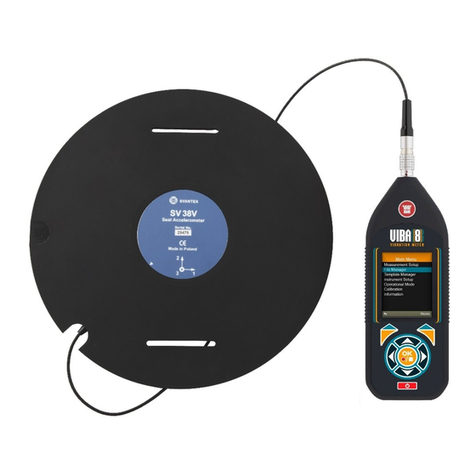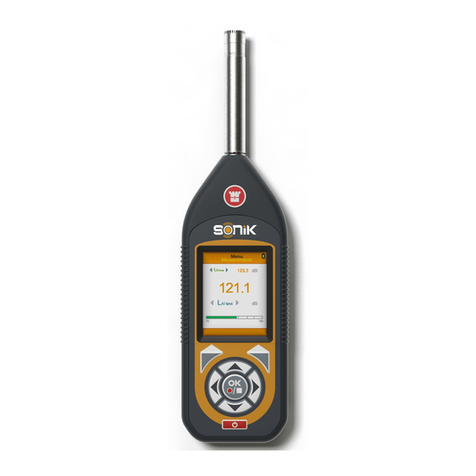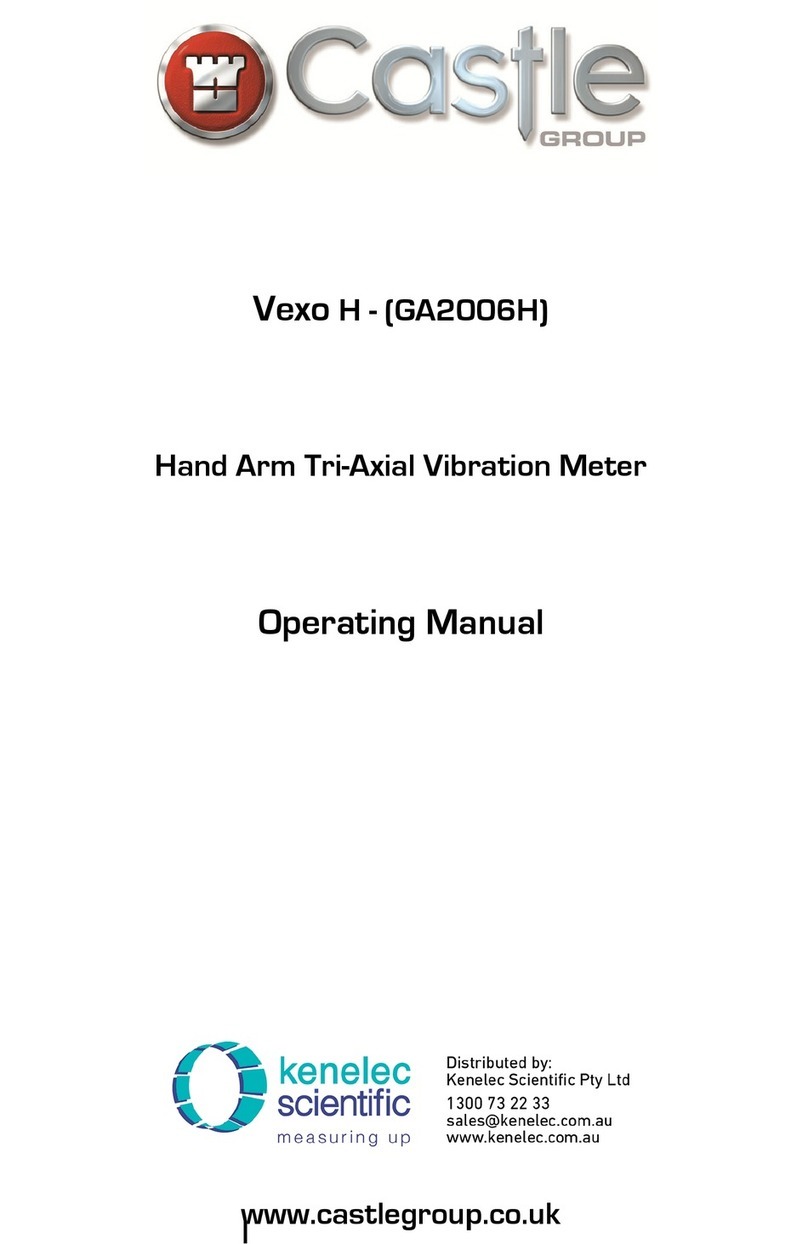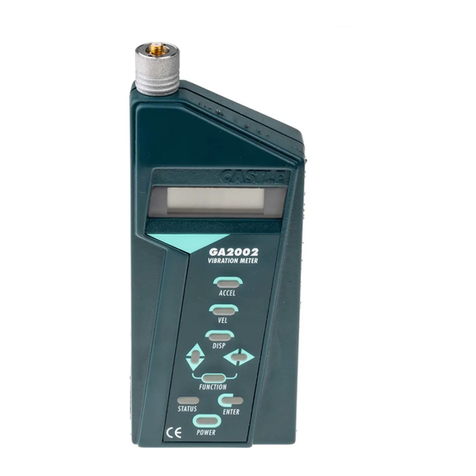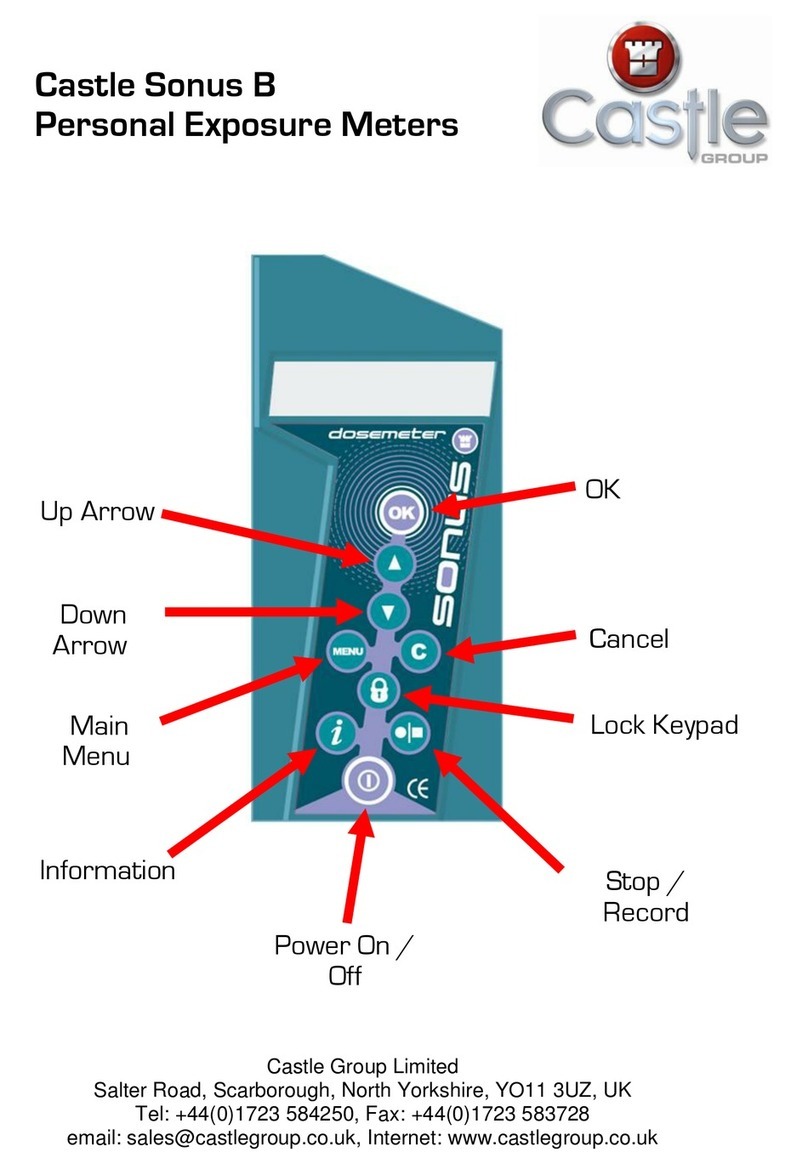Precautions
Operate the unit only as described in this manual.
•The GA112 is a precision instrument. Protect the instrument from shocks and
vibrations.
•Use only the microphone/preamplifier as supplied with the unit. Take special
care not to touch the microphone top as it can easily be damaged.
•Ambient conditions for operation of the unit are as follows : temperature
range - 10°C to +50 °C, relative humidity 30 to 90%.
•Protect the unit from water, dust, extreme temperatures, humidity, and direct
sunlight during storage and use. Also keep the unit away from air with high
salt or sulphur content, gases, and stored chemicals.
•Always turn the unit off after use. Remove the batteries from the unit if it is
not to be used for a long time (a week or more) . When disconnecting the ca-
ble, always unscrew the plug and do not pull the cable.
•Clean the unit only by wiping it with a soft, dry cloth or, when necessary,
with a cloth lightly moistened with water. Do not use any solvents, cleaning
alcohol or chemical cleaning agents.
•Take care that no conductive objects such as wire, metal scraps, conductive
plastics etc. can get into the unit.
•Do not try to disassemble or alter the unit. Otherwise type certification will
become invalid. In case of an apparent malfunction, do not attempt any re-
pairs. Note the condition of the unit clearly and contact the supplier or Castle
Group direct.
NOTE
Castle Group sound level meters are electronic instruments and should be handled
accordingly. Damage caused by misuse, abuse and leaking batteries is not cov-
ered by the warranty. If the instrument fails to function correctly, firstly check the
condition of the batteries. When changing the batteries, replace all three at any
one time. In order to conserve battery life do not leave the instrument turned on
when not in use.













